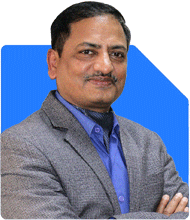Sir, I am an NRI (aus), 40 years old. I am aiming for 10cr in 10 years with 20L per year investment. I zeroed in the following, are they good? Assuming 15% growth per annum.
Parag Parekh flexi cap direct
Axis flexi cap direct g
HDFC mid cap opportunities direct g
SBI small cap fund direct g
ICICI pru technology direct g.
Ans: You want to build Rs 10 crore in 10 years.
You plan to invest Rs 20 lakh per year.
Your target is very inspiring and focused.
You assume 15% growth per year from investments.
This ambition is achievable but needs careful planning and right execution.
At 40 years, you still have time, but need to be very disciplined.
It is good that you are thinking seriously about long-term wealth creation.
However, we need to assess the investment choices deeply.
Evaluation of Your Current Selection
You have selected 5 direct mutual fund schemes.
You selected flexi cap, mid cap, small cap and technology sector funds.
Your selection shows you are willing to take higher equity risk.
Still, few important points must be considered before proceeding.
I will explain the strengths and risks clearly below.
Problems with Direct Mutual Funds
Direct mutual funds are cheaper but not automatically better.
Without Certified Financial Planner guidance, wrong direct fund choices can happen.
Direct funds need constant monitoring and periodic rebalancing.
If you miss reviewing, risk will increase over years.
Investing through a Certified Financial Planner + MFD gives full 360-degree service.
A regular plan managed through MFD with CFP ensures disciplined monitoring.
Professional rebalancing keeps your portfolio healthy against market ups and downs.
Saving 1% expense ratio is not useful if you lose 20% capital by wrong strategy.
Thus, direct funds are not recommended for serious wealth building goals like yours.
Disadvantages of Index Funds
Although you have not mentioned Index funds, still important to highlight here.
Index funds blindly follow the market, they do not aim to beat it.
They invest even in poor companies just because they are in index.
No active decision-making to protect during market fall.
In India, actively managed funds have consistently outperformed index funds.
Index funds are good only in developed countries, not in India yet.
Thus, actively managed mutual funds are better for your 10 crore goal.
Analysis of Your Selected Categories
Now let's look at each category you have selected.
Flexi Cap Funds
Flexi cap funds are very versatile and flexible.
They invest across large, mid, and small cap companies.
They are core funds and suitable for long term investing.
Having two different flexi cap funds is slightly overlapping.
One good flexi cap fund is enough.
Select based on strong consistent performance under Certified Financial Planner guidance.
Mid Cap Fund
Mid caps offer higher growth potential compared to large caps.
They also carry higher volatility risk.
Mid cap exposure must be limited to 20-25% of portfolio.
Selection of quality midcap fund is critical.
Blind selection can backfire badly during market corrections.
Small Cap Fund
Small caps are even more volatile than mid caps.
They give high returns only when market is extremely strong.
In down markets, they can fall 60-70%.
Small cap exposure should not exceed 10-15% of total portfolio.
Handling small caps requires experienced monitoring.
Not suitable for very aggressive allocation unless monitored monthly by CFP.
Technology Sector Fund
Sector funds like technology funds are very risky.
If sector performs, gains will be big.
If sector underperforms, losses will be severe.
Sector exposure should be maximum 5-10% of your portfolio.
Technology sector is very cyclical and policy dependent.
Too much sector allocation can derail your 10 crore goal.
Ideal Structure for You
Now, based on your inputs, here is a better structure for you.
Again, no scheme names are suggested, as per your instruction.
Core Portfolio (65% to 70%)
One strong Flexi Cap fund (managed by good fund manager).
One Large and Mid Cap fund (balanced approach towards large caps and midcaps).
One Conservative Hybrid Equity Fund (for stability during market volatility).
Satellite Portfolio (30% to 35%)
One focused Mid Cap fund with proven track record.
One selected Small Cap fund but with strict monitoring.
Minimal sector exposure like Technology, not more than 5%.
Regular review of sector allocation every quarter.
Important Points to Consider
Maintain proper diversification across sectors and market caps.
Avoid duplication of same category funds.
Choose only consistent long-term performers.
Annual rebalancing is a must.
Review fund performance once in 6 months minimum.
Align investments based on market valuations with CFP guidance.
Managing Risk and Returns
When aiming for Rs 10 crore, managing risk is as important as earning returns.
Never keep 100% equity exposure throughout 10 years.
Move part of profits to safer instruments as you near 10 years.
Create an asset allocation roadmap now itself.
Follow the roadmap strictly under Certified Financial Planner supervision.
Use Systematic Transfer Plans (STPs) whenever shifting money between categories.
Inflation and Taxes
Inflation is your biggest enemy, bigger than taxes.
At 6% inflation, Rs 10 crore after 10 years will feel like Rs 5.5 crore today.
Thus, you must keep wealth creation target a little higher than 10 crore.
New MF Capital Gain Tax rules must be kept in mind:
Equity fund LTCG above Rs 1.25 lakh taxed at 12.5%.
Short-term capital gains taxed at 20%.
Debt funds fully taxed as per your income slab.
Plan withdrawals carefully to minimise tax impact.
Importance of Certified Financial Planner Support
Since you are serious about wealth creation, professional support is very important.
A Certified Financial Planner will give you:
Proper asset allocation based on your risk capacity.
Right fund selection based on 360-degree analysis.
Regular portfolio review and timely rebalancing.
Tax efficient withdrawal planning.
Contingency planning in case of emergencies.
Alignment of investments with your long term goals.
Emotional discipline during market volatility.
Peace of mind that your future is well protected.
Final Insights
You have shown excellent clarity and commitment towards your financial goals.
However, building Rs 10 crore is a serious, full-time task needing expert care.
Your fund selection direction is good but needs fine-tuning for stability and efficiency.
Direct mutual funds without professional guidance can expose you to unnecessary risks.
Active management, regular reviews, dynamic rebalancing will increase your success chances.
Focus on wealth preservation as much as on wealth creation over next 10 years.
Please make sure your family is also aware of your plans and investments.
I sincerely appreciate your proactive and visionary thinking for your future.
Best Regards,
K. Ramalingam, MBA, CFP,
Chief Financial Planner,
www.holisticinvestment.in
https://www.youtube.com/@HolisticInvestment
























